A title, especially when newly conferred, did not automatically command universal respect in mid 18th-century Britain. And so it was with Elizabeth Percy, Duchess of Northumberland, whom the press mockingly called ‘the Duchess of Charing Cross’, referring to the location of her opulent London home, Northumberland House, where she and her husband entertained guests of the highest social and political rank. Elizabeth Percy may have been the daughter of the Duke of Somerset and the eventual heir to the ancient barony of Percy through her father – but, at the time of her love marriage to Sir Hugh Smithson in 1740, her husband was a mere baronet, whose forebears had made a fortune in haberdashery. As the couple gradually ascended the social hierarchy – Sir Hugh was created Duke of Northumberland in 1766 – they used public and private patronage as a tool of self-promotion. A cornerstone of this plan was the extensive refurbishment of their properties, where, by employing many of the best Italian and English artists and craftsmen, above all Robert Adam, they created some of the finest and most influential interiors of the period. Enlightened Eclecticism, Adriano Aymonino’s masterly new study of the couple’s patronage, collecting and display argues that their eclectic tastes – embracing neoclassical, Gothic and contemporary styles – were part of a carefully considered stratagem to further their ambitions.
Early in his career, Sir Hugh demonstrated his ability to combine patronage with self-promotion when he commissioned Canaletto, newly arrived in London, to paint Westminster Bridge, which was then under construction. Sir Hugh was one of the most assiduous of the bridge’s board of commissioners and, when Canaletto’s painting was quickly engraved for dissemination, in a shrewd piece of personal marketing he ensured that it was dedicated to himself.
At first the couple lived at Sir Hugh’s modest family seat, Stanwick Hall in Yorkshire, but Lady Elizabeth’s inheritance of the Percy estates in 1750 (excepting Petworth, which passed to her cousin, Lord Egremont) brought the couple several prestigious but unmodernised properties and they embarked on a major overhaul of each. The exteriors were left largely untouched, but inside they were radically transformed by some of the most fashionable and expensive schemes in Britain.
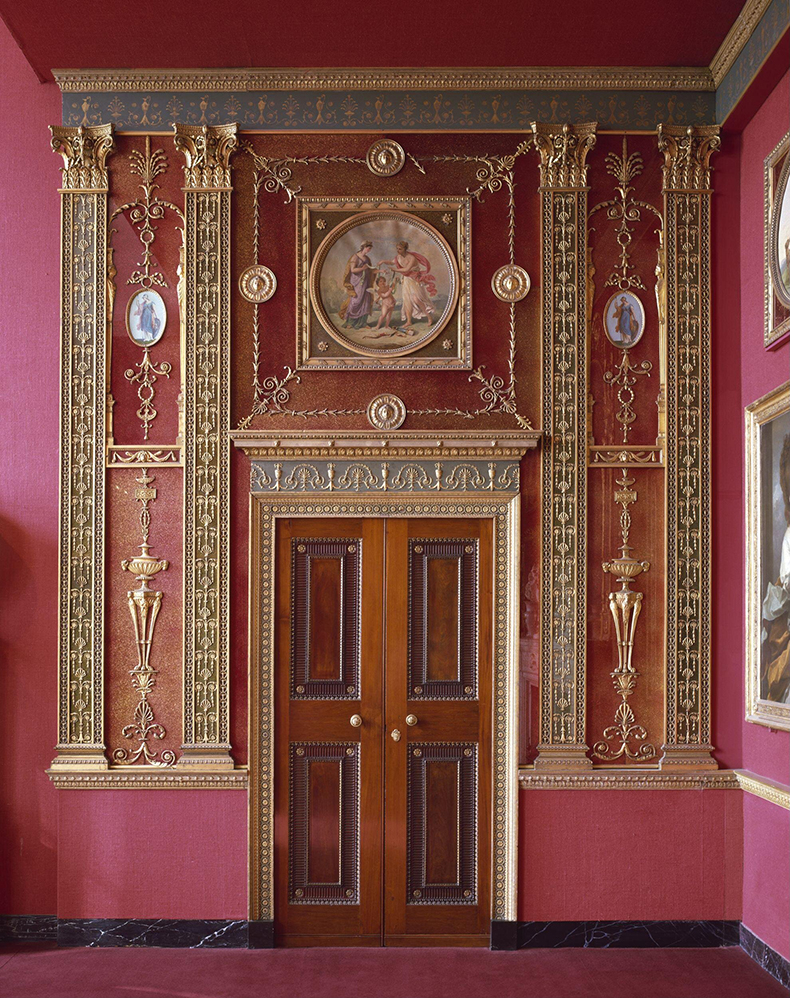
Panel from the Glass Drawing Room of Northumberland House, London, designed by Robert Adam with insets painted by Giambattista Cipriani (?) and made in 1773–75. Victoria and Albert Museum, London
Northumberland House in London was the couple’s principal venue for entertaining, with correspondingly lavish décor and a collection of impressive Old Master paintings. The great space of the Gallery-ballroom was lined with copies of Roman frescoes, creating a pictorial manifesto of the Italophile culture in which Sir Hugh had steeped himself. A set of Scenes of Eastern Travel tapestries commissioned from Paul Saunders’s Soho workshop alluded to Sir Hugh’s support for English manufacturers. But, despite his efforts to establish an English glass manufactory, the large mirror plates for Adam’s Glass Drawing Room were imported from Picardy at the vast cost of £1,475 for the glass alone. To mitigate the cost, Sir Hugh’s upholsterer attempted to evade import duty by smuggling the mirrors in the diplomatic bag of the Venetian ambassador but was caught and forced to pay the eye-watering tax of 75 per cent.
It was at Syon House, west of London on the banks of the Thames, that Sir Hugh gave full expression to his classical tastes, forging a partnership with Robert Adam that was to last almost two decades. From 1760, client and designer worked closely together to recreate a Roman villa urbana and, by association, present the former as a model of civic virtue. In the process, Syon became a leading example of neoclassical design and Adam consolidated his practice as architect, decorator and dealer. His brother James, on the ground in Rome, was instrumental in sourcing the statues and bas-reliefs that were integral to Syon’s design. Adam’s five state rooms are the only surviving interiors created by the Northumberlands, and Aymonino’s identification of the sources and iconography of the decoration adds a new depth of analysis of these well-known rooms. Many of these elements were derived from volumes of engravings in Sir Hugh’s own library and, in drawing on the recently published Antichità di Ercolano esposte (Antiquities of Herculaneum Exposed), Sir Hugh and Adam were in the vanguard of neoclassical taste in Europe. Despite this fidelity to classical precedent, decorative suitability still prevailed over iconographical coherence, and as Aymonino points out, ‘what really counted in British interiors was decoration above all else’.
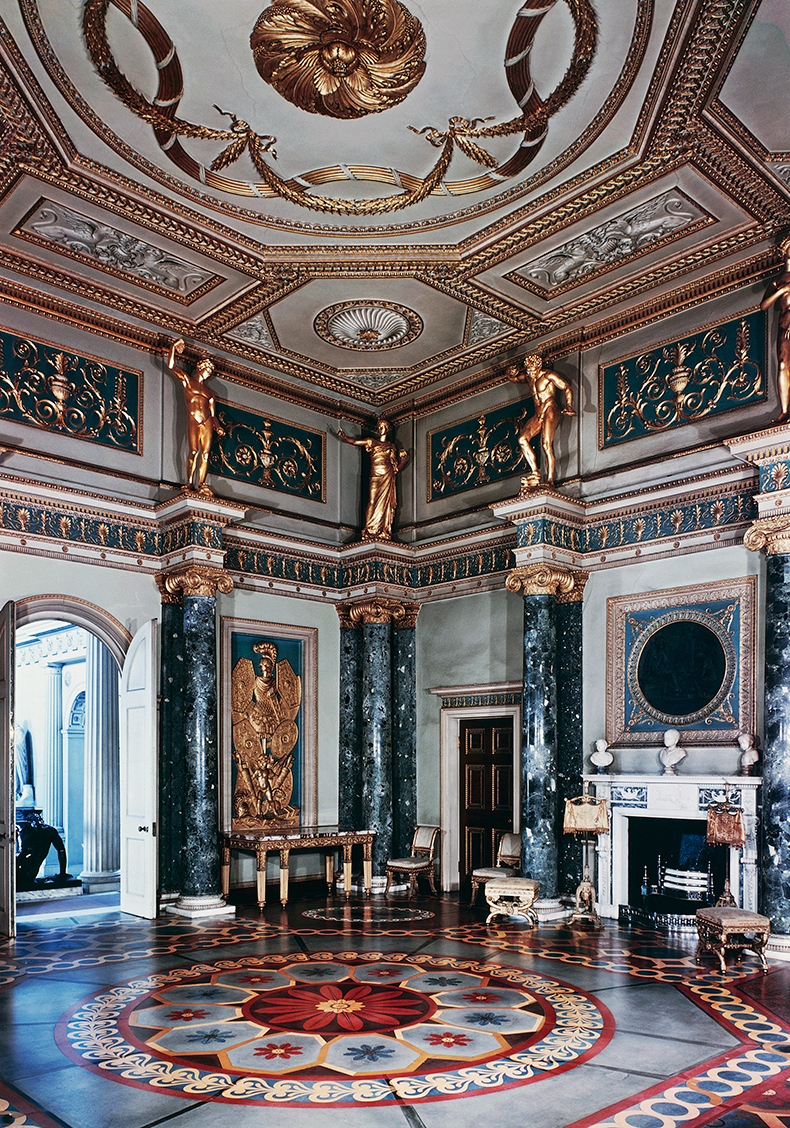
The vestibule in Syon House, London, designed by Robert Adam. Photo: DeAgostini/Getty Images
This eclectic approach to design was evident at Alnwick Castle in Northumberland, renovated by Elizabeth Percy in Gothic Revival style, in homage to her Percy ancestors. Reconstructed from drawings and descriptions, Adam’s polychrome walls, chimneypieces, ceilings and carpets laced classical detailing with Strawberry Hill Gothic. As at Syon, many of the sources for the designs can be found in the Alnwick library, in studies of heraldry, genealogy and medieval buildings. But this was no slavish medieval recreation and many of the furnishings were English interpretations of contemporary French design. By the time of the duchess’s death in 1776, Alnwick had been transformed from a virtually uninhabitable mouldering pile into one of the must-see destinations of the country-house circuit.
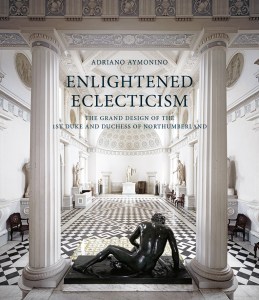 As the heiress to an ancient title and estates, the ‘Duchess of Charing Cross’ was hardly typical, even among the aristocracy. Aymonino’s emphasis on co-patronage is refreshing nonetheless, and he shows how Sir Hugh’s classicism and Lady Elizabeth’s antiquarianism played complementary roles in the couple’s self-presentation. Simply to peruse the pages of this book is a pleasure. Aymonino’s fluid prose, the elegant layout and high-quality illustrations (including many of Adam’s designs) vividly recreate the material environment of two of the most influential tastemakers of their time.
As the heiress to an ancient title and estates, the ‘Duchess of Charing Cross’ was hardly typical, even among the aristocracy. Aymonino’s emphasis on co-patronage is refreshing nonetheless, and he shows how Sir Hugh’s classicism and Lady Elizabeth’s antiquarianism played complementary roles in the couple’s self-presentation. Simply to peruse the pages of this book is a pleasure. Aymonino’s fluid prose, the elegant layout and high-quality illustrations (including many of Adam’s designs) vividly recreate the material environment of two of the most influential tastemakers of their time.
Enlightened Eclecticism: The Grand Design of the 1st Duke and Duchess of Northumberland by Adriano Aymonino is published by the Paul Mellon Centre for Studies in British Art.
Unlimited access from just $16 every 3 months
Subscribe to get unlimited and exclusive access to the top art stories, interviews and exhibition reviews.


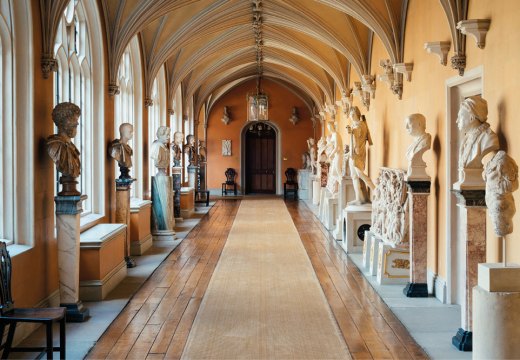
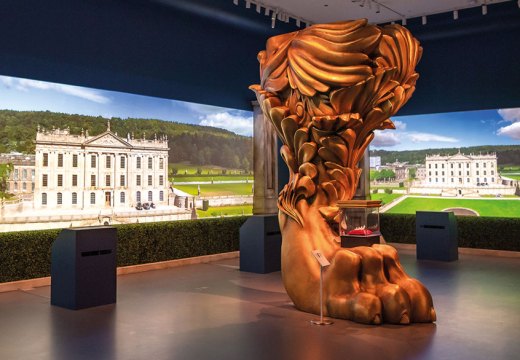
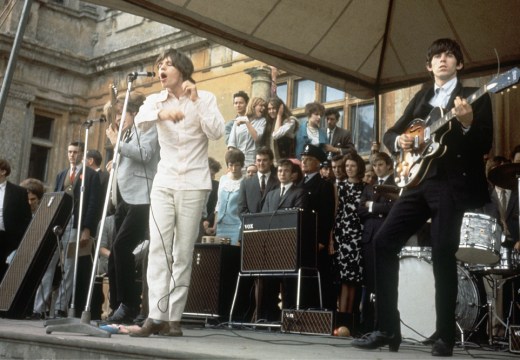









![Masterpiece [Re]discovery 2022. Photo: Ben Fisher Photography, courtesy of Masterpiece London](http://www.apollo-magazine.com/wp-content/uploads/2022/07/MPL2022_4263.jpg)
It’s time for the government of London to return to its rightful home